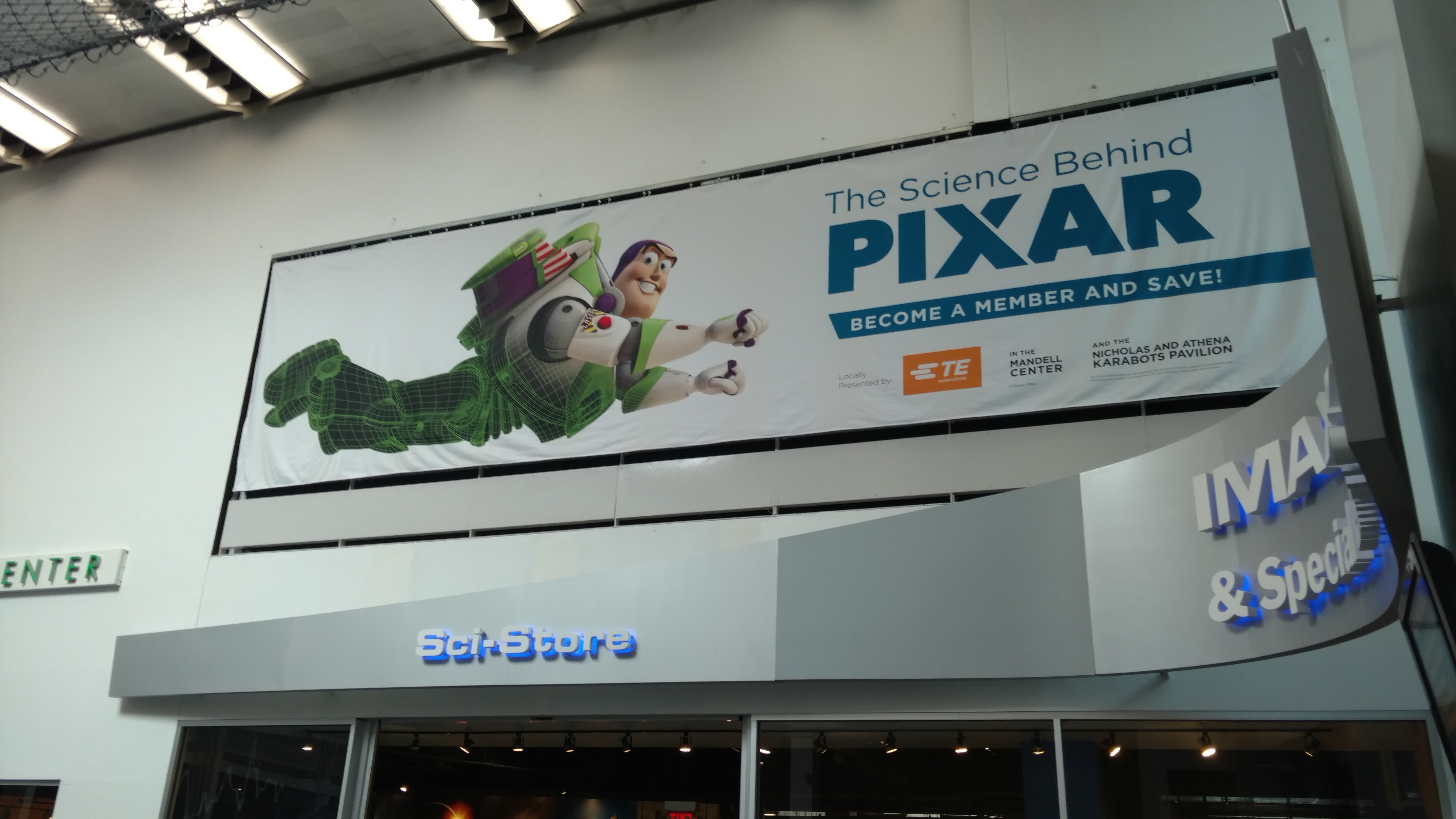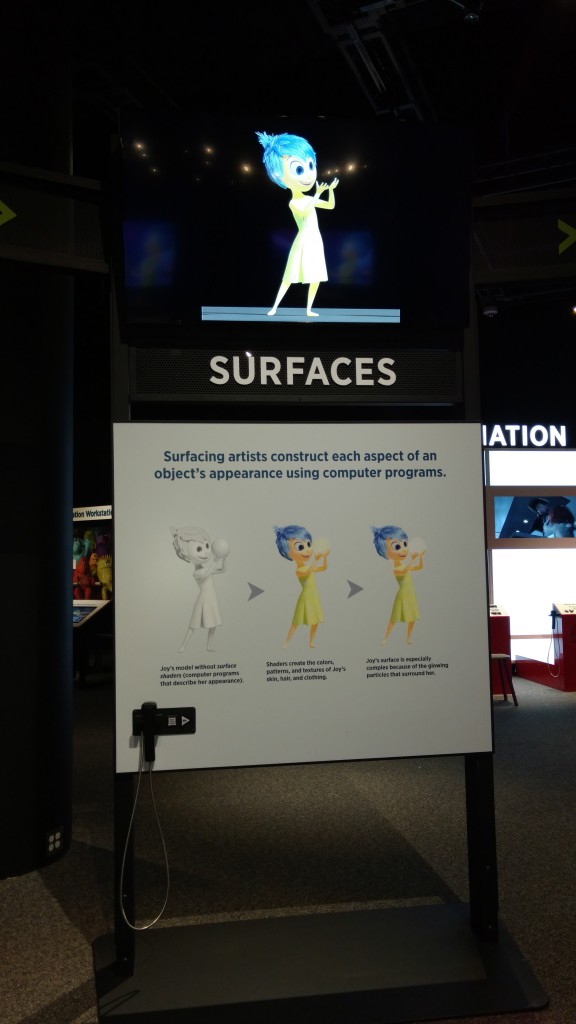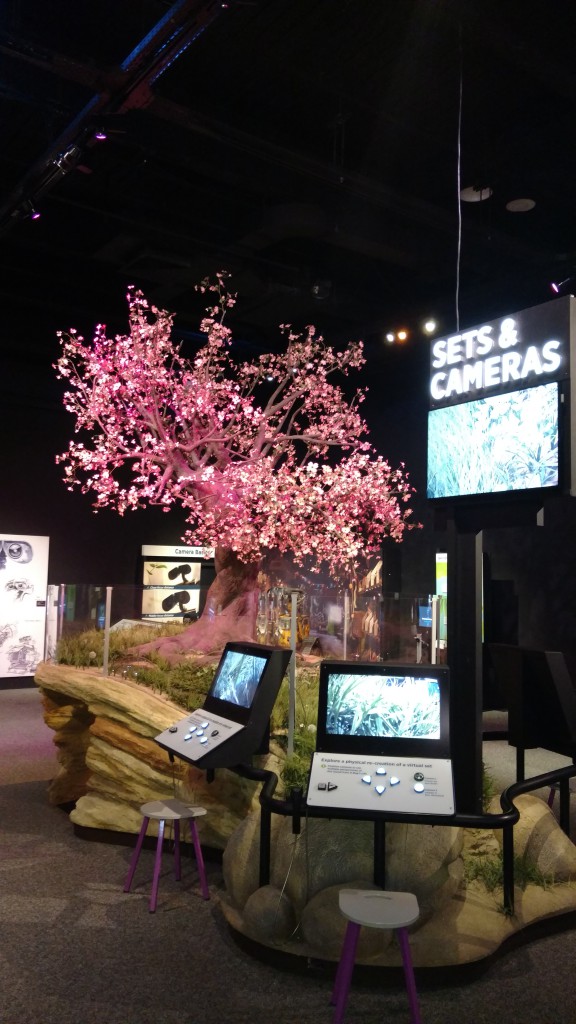To Philly and Beyond: “The Science Behind Pixar” Launches National Tour
Did you ever go to a movie and wonder “how did they do that?” Wish you could peak behind the camera to experience how special effects are done? How about an animated film, how do they know what the world looks like through the eyes of an ant or caterpillar? Or just how much work goes into animating every strand of fur on Sully from Monsters University?
Now fans can get an up-close and personal look into the magic that is Pixar animation at the Franklin Institute. The Science Behind Pixar has arrived in Philadelphia on the first stop of its national tour. The unique exhibit takes fans of all ages inside the award-winning films of Pixar Animation Studios through the lens of the STEM concepts used by the artists and scientists who help bring the films and their unforgettable characters to like on the big screen. From Sully to Mike Wazowski, to Buzz Lightyear, to WALL-E to Fear, Anger, Joy and the rest of the emotions from Inside Out, children of all ages will be able to see and witness firsthand how Pixar movies are made.
It is not just an exhibit but it is interactive production pipeline where visitors can get hands on experience in every step of the storytelling process from Modeling, Rigging, Surfaces, Sets and Cameras, Lighting, Animation, Simulation and Rendering.
“We were really excited to show the part that people don't normally get a look into,” says Eben Otsby, Technical Department Head for Pixar Animation Studios. “People know a little about the art behind our movies, certainly know how the movies look, but a lot of people don't realize that there is a ton of science and technology and mathematics behind every one of our movies,” Ostby adds.
The co-developer of Pixar's revolutionary animation system, Marionette, Ostby has held the role of lead technical director on a number of Pixar feature and short films, including Toy Story, Toy Story 2, A Bug's Life, "Luxo Jr.," and served as modeling supervisor for Monsters, Inc, and supervising technical director for the Golden Globe winning feature, Cars. So it made perfect sense for Otsby to be intimately involved in the blueprint for the exhibition.
Credited with creating space ranger Buzz Lightyear, Ostby and Pixar collaborated on the exhibit with the Boston Museum of Science. After a successful run in Beantown, the production embarked on a multi-city tour aimed at not only entertaining guests but educating them and perhaps even inspiring many to pursue careers in STEM, science, technology, engineering and math.
Dr. Frederic Bertley, Senior Vice President of Science and Education at The Franklin Institute says today you cannot escape the STEM model. “We are surrounded by science and technology. The tools we use to communicate, your cell phone, your tablet, that's all science and technology.” Likewise he notes that the food that we eat, clothes that we wear, “scientists and engineers actually work on making these fabrics easy to wash and stain less. I mean transportation; everything is dependent on science and technology.”
Today STEM learning has morphed into STEAM with the addition of arts to the science, technology, engineering and math curriculum and that is where Pixar fits nicely into the equation. That is where Dr. Bertley advises today you cannot necessarily motivate kids by talking about Albert Einstein and Marie Curie but Sully, Buzz, WALL-E and Edna Mode can go a long way to igniting that spark in children. “The genius of Pixar is everybody knows Pixar movies, kids and adults alike. Kids can certainly identify with certain characters they really love and so it is an easy win.”
From the moment you enter the exhibition you will be greeted on the left by the warm and fuzzy smile of Sully and the one-eyed wonder Mike where you can snap a selfie with the two stars. To the right Buzz Lightyear is posing for his close-up “to infinity and beyond.” As you wind your way through the 15,000-square-feet of exhibition space, there are more than 40 interactive elements demonstrating the technology that supports the creativity and artistry of Pixar storytellers.
Most of the tactile exhibits have triplicate workstations to accommodate those fans wishing to try their hand at lighting a scene from the Up house to changing the underwater color and mood for Dory from Finding Nemo. The triple workstations insure that there will be little if any wait time at the interactive kiosks so as to facilitate visitors on their tour through the exhibit.
“A Bugs Life” view of the world allows the littlest visitors to climb underneath the staging area and poke their heads through the blades of grass to see first-hand what Flik, Atta and Dot might see from their vantage point in the ant colony. Specially designed video cameras project their experiences on monitors above ground for everyone else to witness.
Not to be missed especially by those wanting to work in animation are the video stations throughout the exhibit space which feature Pixar employees or cast members sharing their insights into the complex challenges the studio has overcome in the development of its ground-breaking movies. Additional videos highlight the variety of careers at Pixar Studios and are meant to broaden visitors’ views of what it means to work in a STEM field.
[gallery td_select_gallery_slide="slide" size="large" ids="144555,144558,144557,144553,144551"]It is easy to see just how Pixar and Otsby are not only excited about the tour but also the chance to spark that inspiration of students to perhaps one day follow in their footsteps. “A good third of the work we put into each film is really very technical, very mathematical” says Otsby. “We were both excited to talk about that. I am excited to talk about that. I am excited to talk about it because I want more people to know about it. We are also excited to get a new generation of students to know about it by us telling them a little about the role of STEM disciplines in our movie-making and maybe excited some of them to go into those careers.”
The Science Behind Pixar, which runs through September 5th the Franklin Institute, is a must-see exhibit whether in Philadelphia or when it hits the road in the fall on its next stop.






